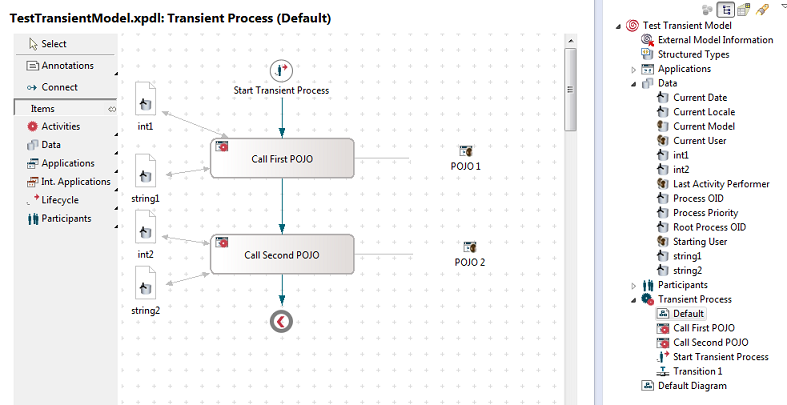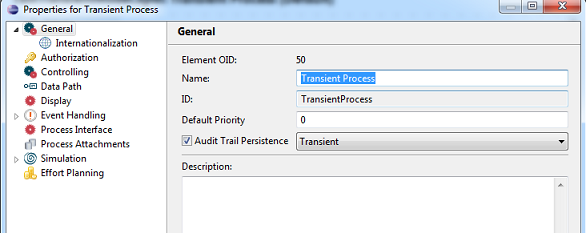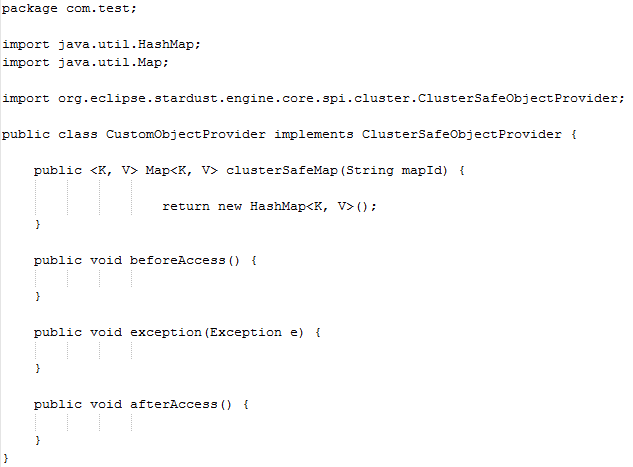Notice: this Wiki will be going read only early in 2024 and edits will no longer be possible. Please see: https://gitlab.eclipse.org/eclipsefdn/helpdesk/-/wikis/Wiki-shutdown-plan for the plan.
Stardust/Knowledge Base/Performance Tuning/Achieving high Throughput with transient Processes
Introduction
Traditionally, BPM systems have been employed in designing Human-centric or Case Management type process flows. Such processes rely on the Audit Trail capabilities of the underlying BPM solution. While Stardust already provides good support for such processes, it is also capable of supporting integration workflows. Here, it acts as a routing and transformation engine to orchestrate a process flow. In such cases the need for low latency and high throughput takes precedence over Audit Trail data persistence.
Transient Processes provide the following advantages:
- Very little communication with the database.
- All runtime process data is kept in memory for the lifetime of the Process Instance.
- Optimized for low latency
- Significantly higher throughput
Additional information about Transient Processes is available here. All artifacts referred to in the following discussion can be downloaded from here.
Example
We use the following example to start off our discussion on Transient Processes (see Figure 1 below).
Figure 1: Example Transient Process
As shown above, the process consists of a couple of activities each of which invokes a POJO with a couple of In/Out parameters. Ordinarily this data would be persisted to the AuditTrail during process execution and the process history would display the execution sequence if one were to view this information in the Portal. To mark the process as transient we select the corresponding property in the Process Properties dialog box (see Figure 2 below).
Figure 2: Process Properties for Transient Process
To ensure that this property is used by the Stardust engine at runtime we need to set the “SupportTransientProcesses” property in the carnot.properties file. We also need to ensure that the database we use supports sequences (such as Oracle). For this discussion we will use MySQL as our AuditTrail database. To enable support for sequences in MySQL we are required to do the following:
1. Create a compatible Stardust AuditTrail schema Create a MySQL database and run the sysconsole command as follows to create an AuditTrail that supports sequences:
sysconsole -v -r com.mysql.jdbc.Driver -dbschema <schema_name> -t mysql_seq -l jdbc:mysql://<servername>:<port>/<dbname> -d <username>-s <password> -p sysop createschema
Note that the dbtype option is set to "mysql_seq". Additional information on creating an AuditTrail on MySQL is available here. To learn more about the sysconsole command please refer to the Stardust documentation.
2. Set the appropriate database properties in carnot.properties Add/Edit the following entries to carnot.properties:
AuditTrail.Type = MYSQL_SEQ AuditTrail.DriverClass = com.mysql.jdbc.Driver AuditTrail.URL = jdbc:mysql://<servername>:<port>/<dbname> AuditTrail.Schema = <dbname> AuditTrail.User = <username> AuditTrail.Password = <password>
The URL, Schema, User and Password entries should match the values provided in the sysconsole command above.
3. Provide an implementation of a ClusterSafeObjectProviderHolder. This is required by the Stardust engine to share objects internally. A simple implementation is provided below:
Figure 3: Custom ClusterSafeObjectProvider implementation



